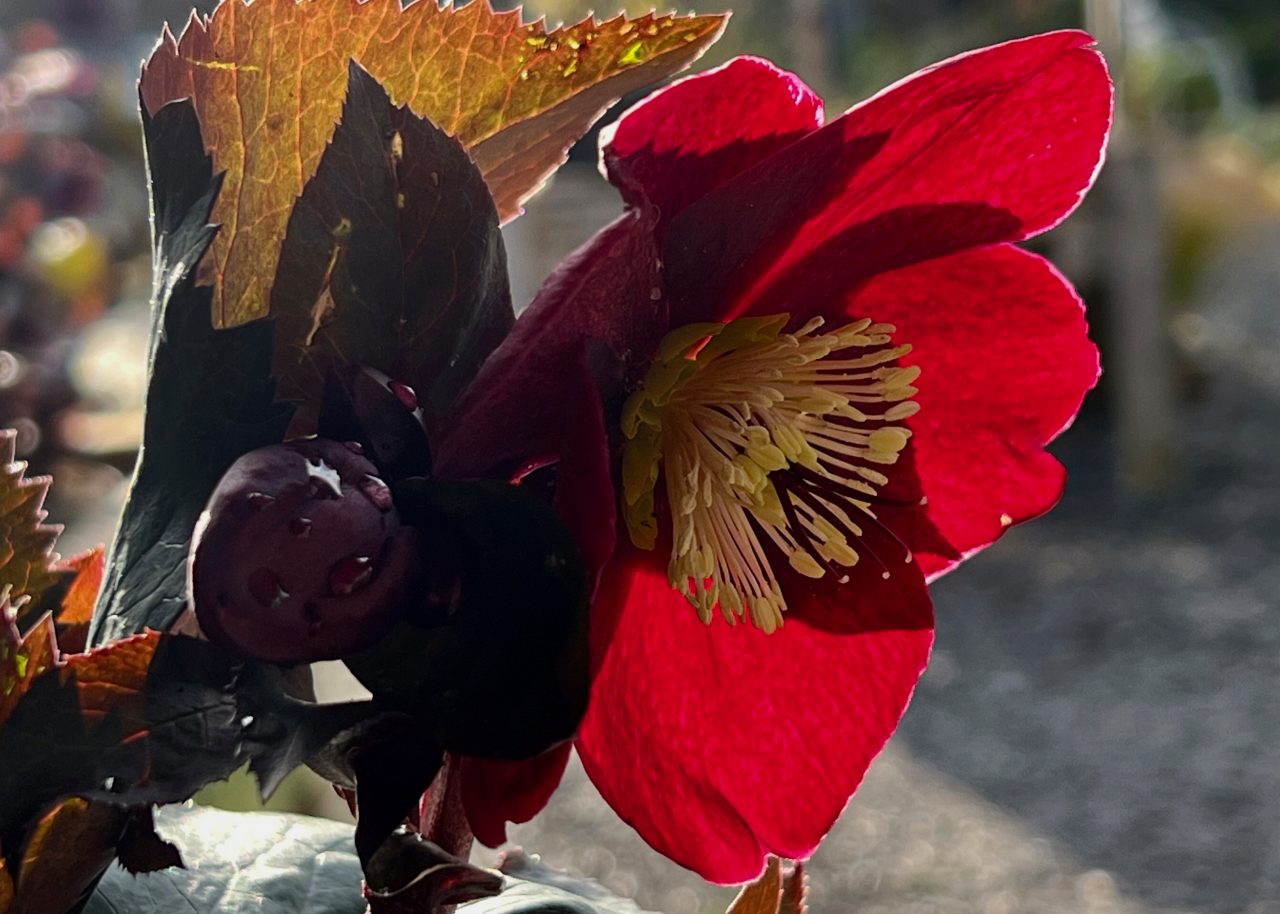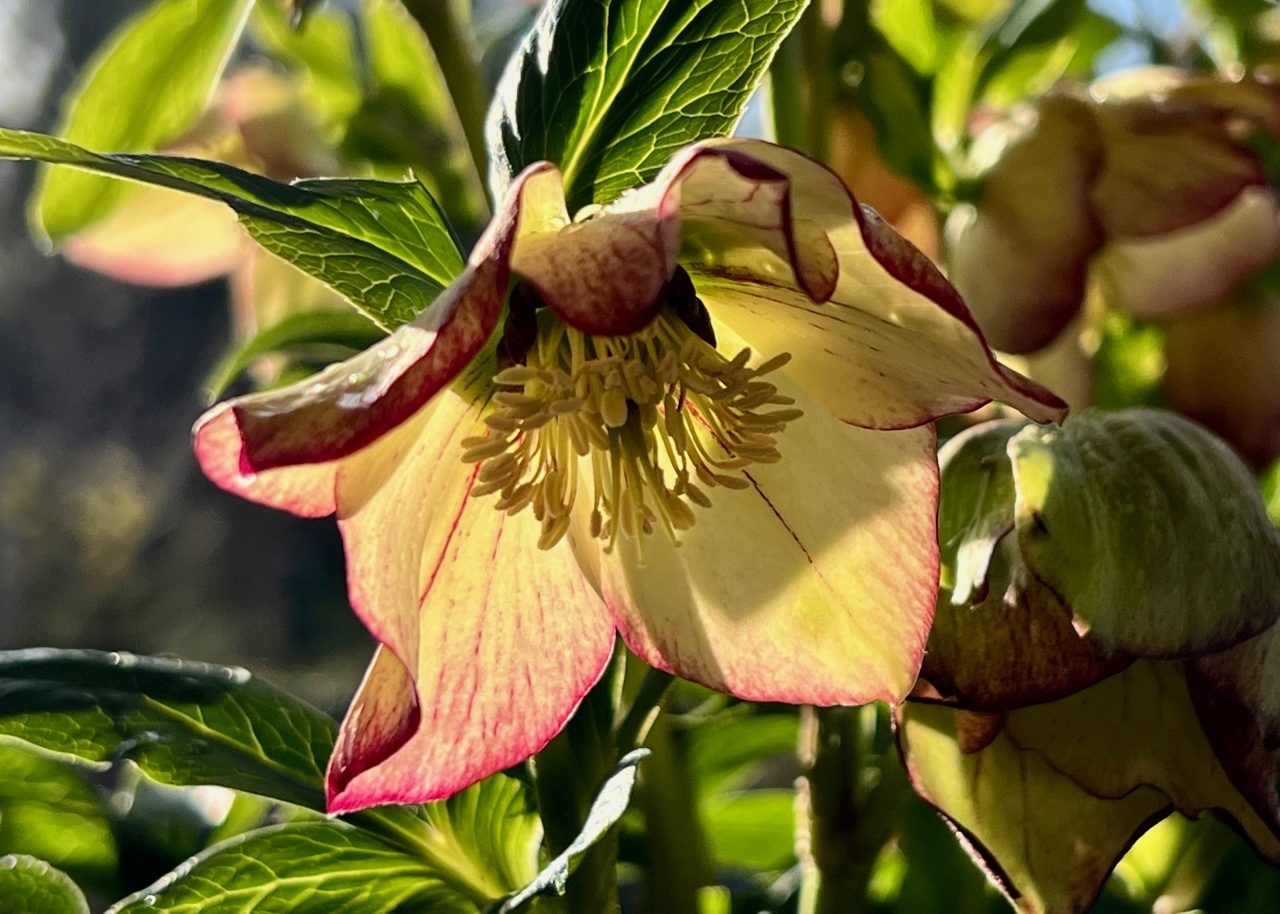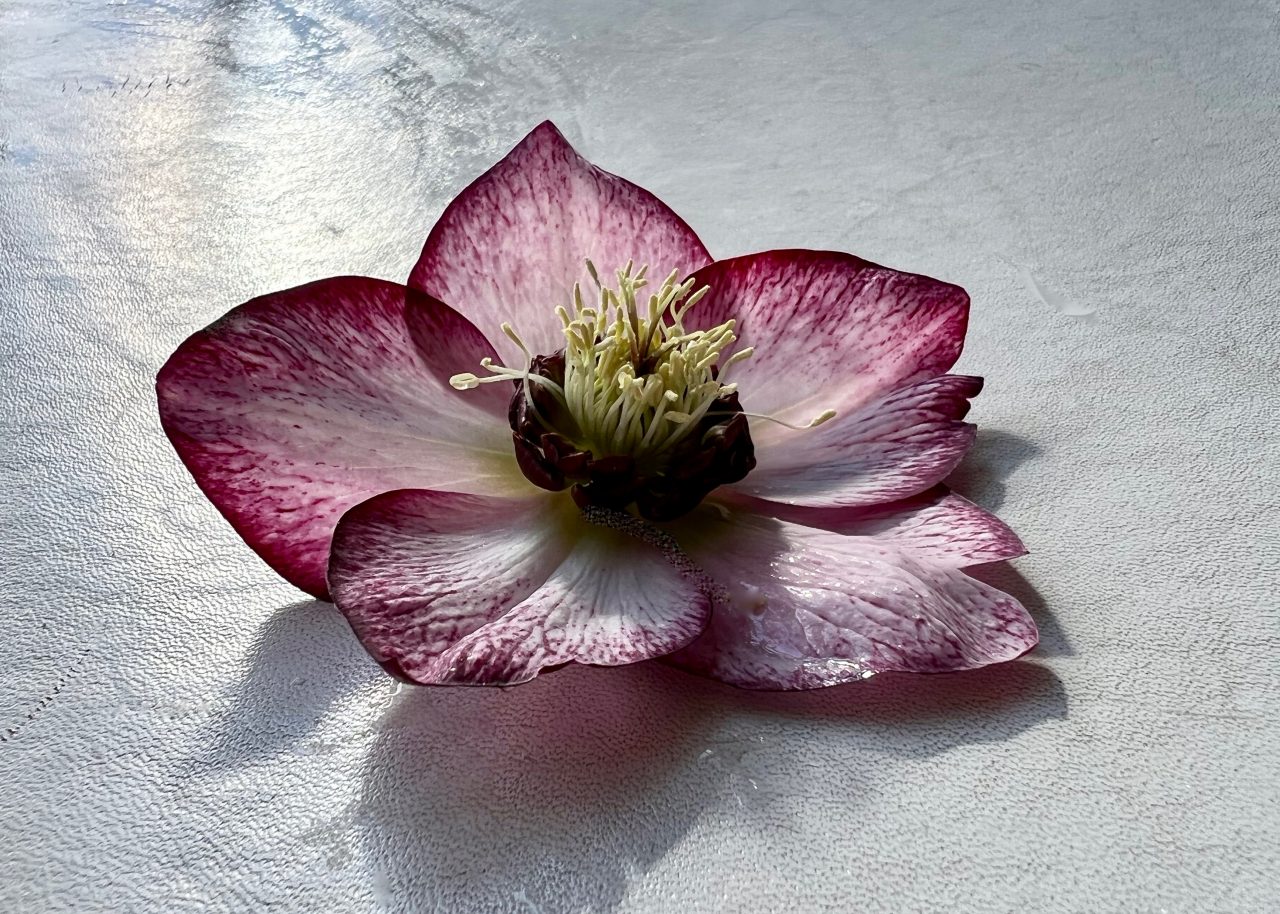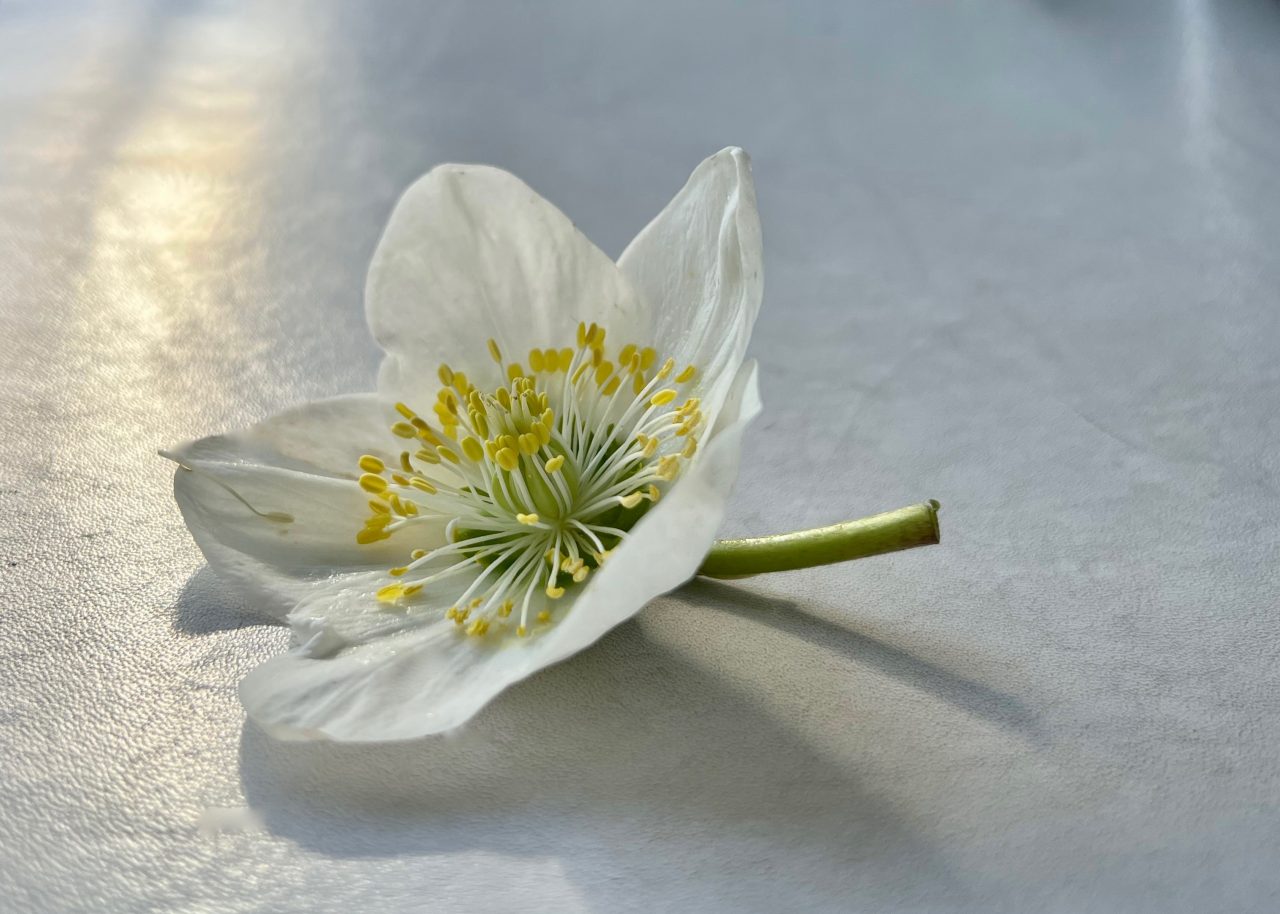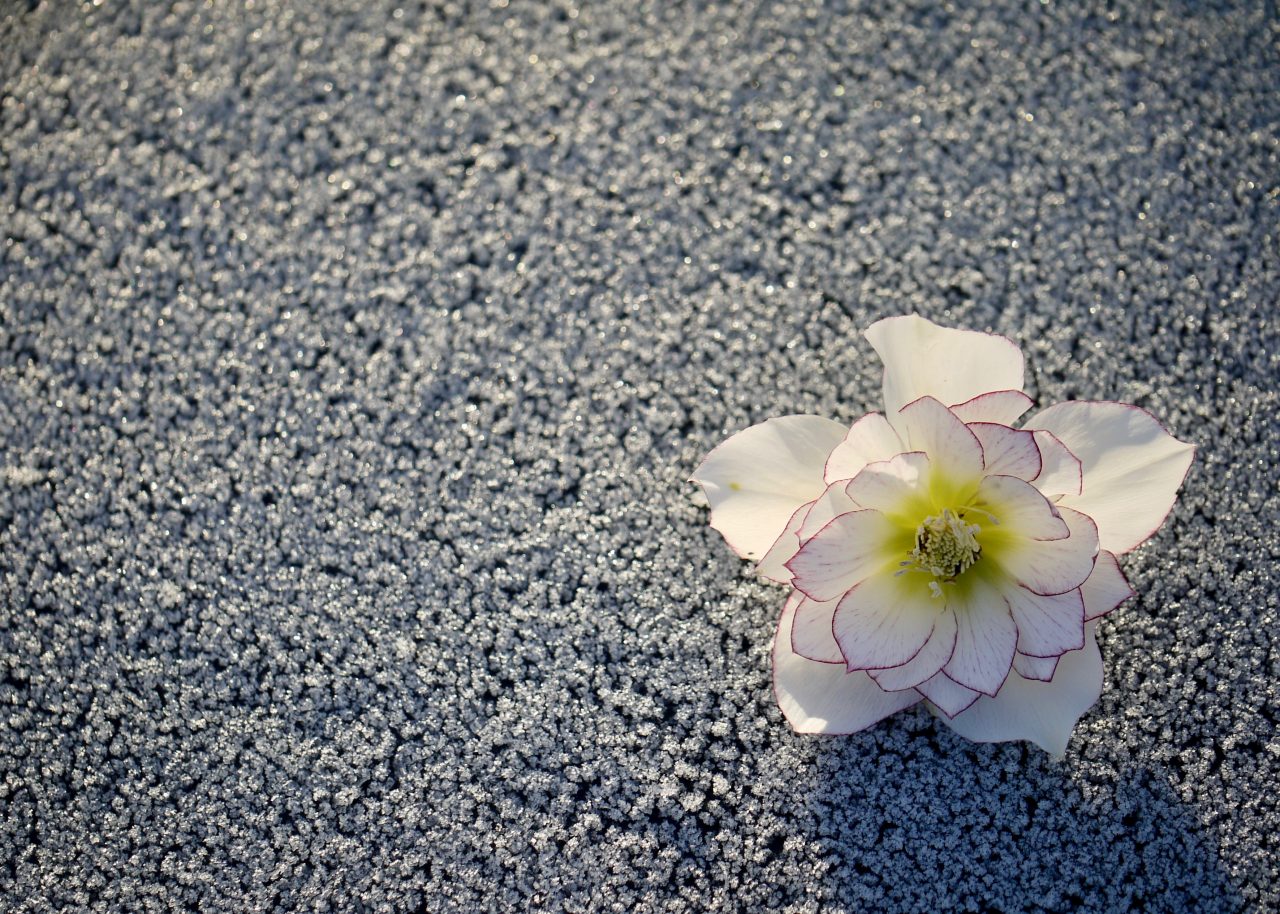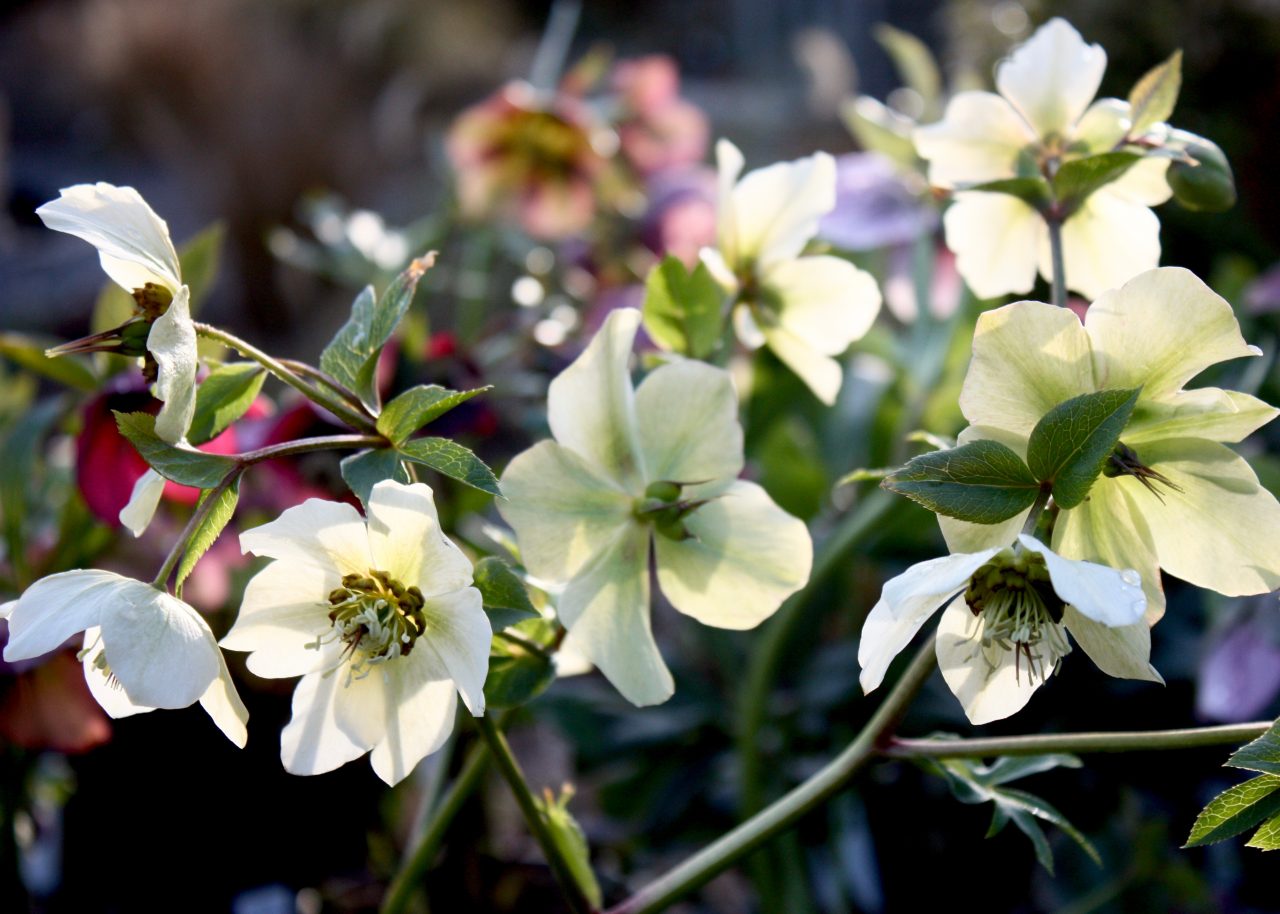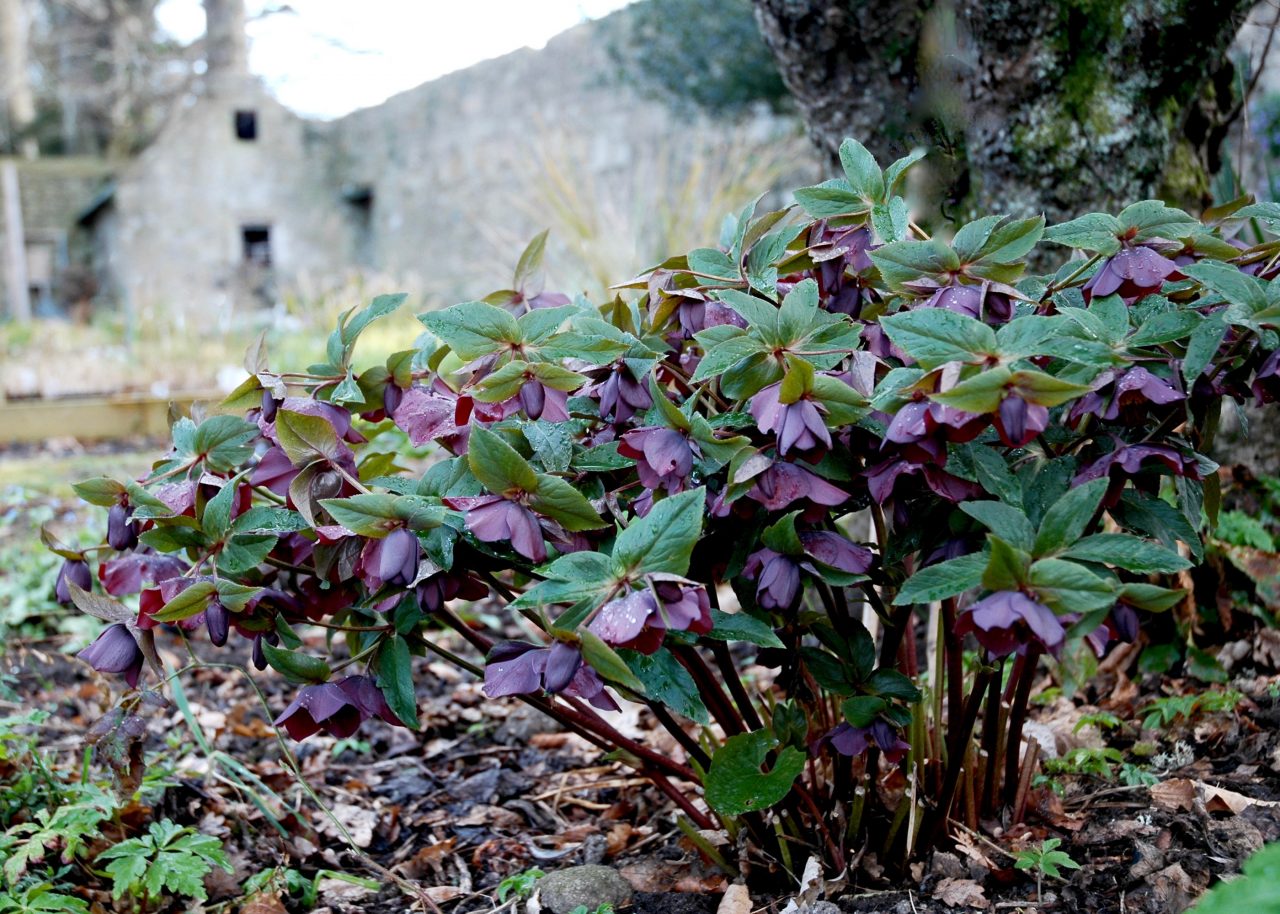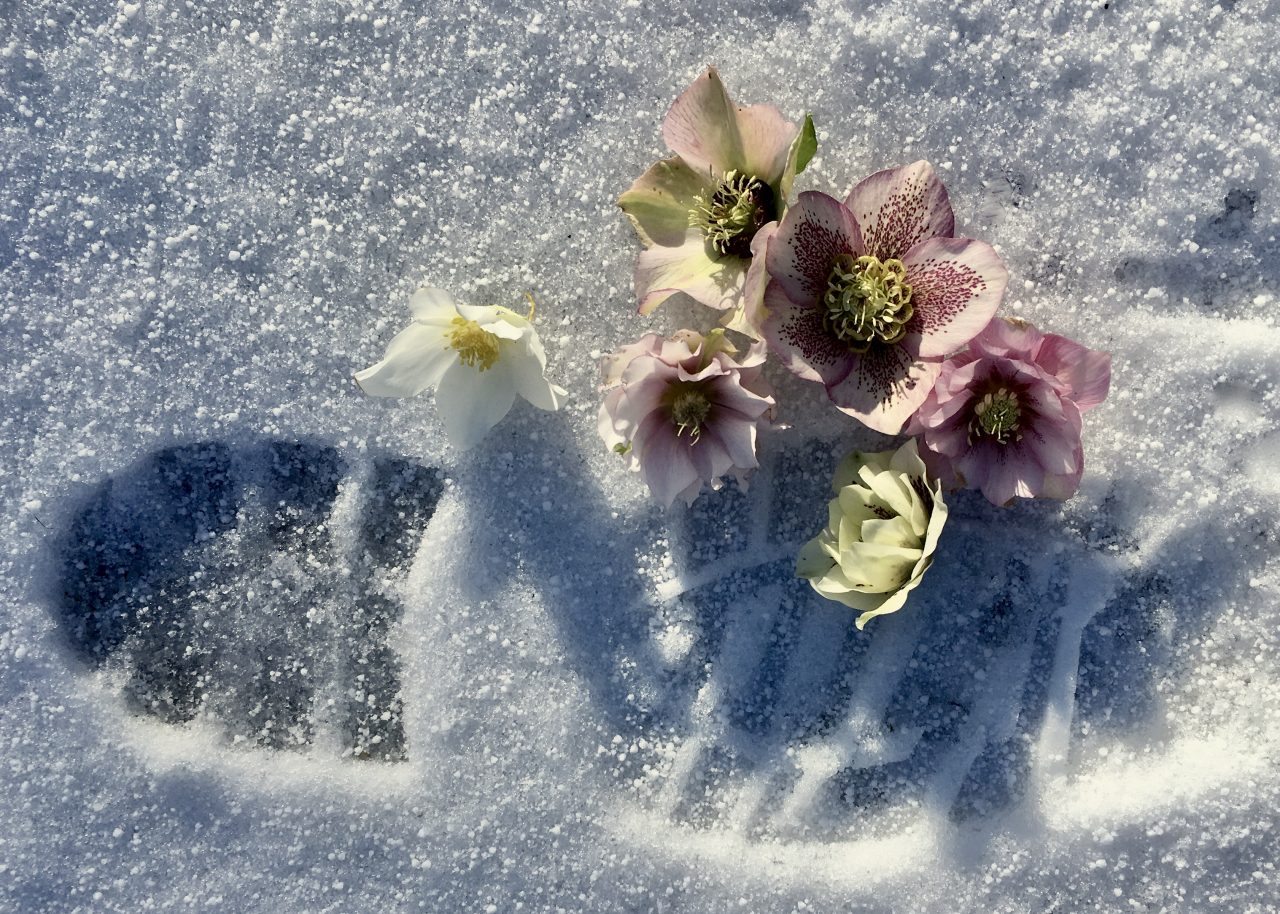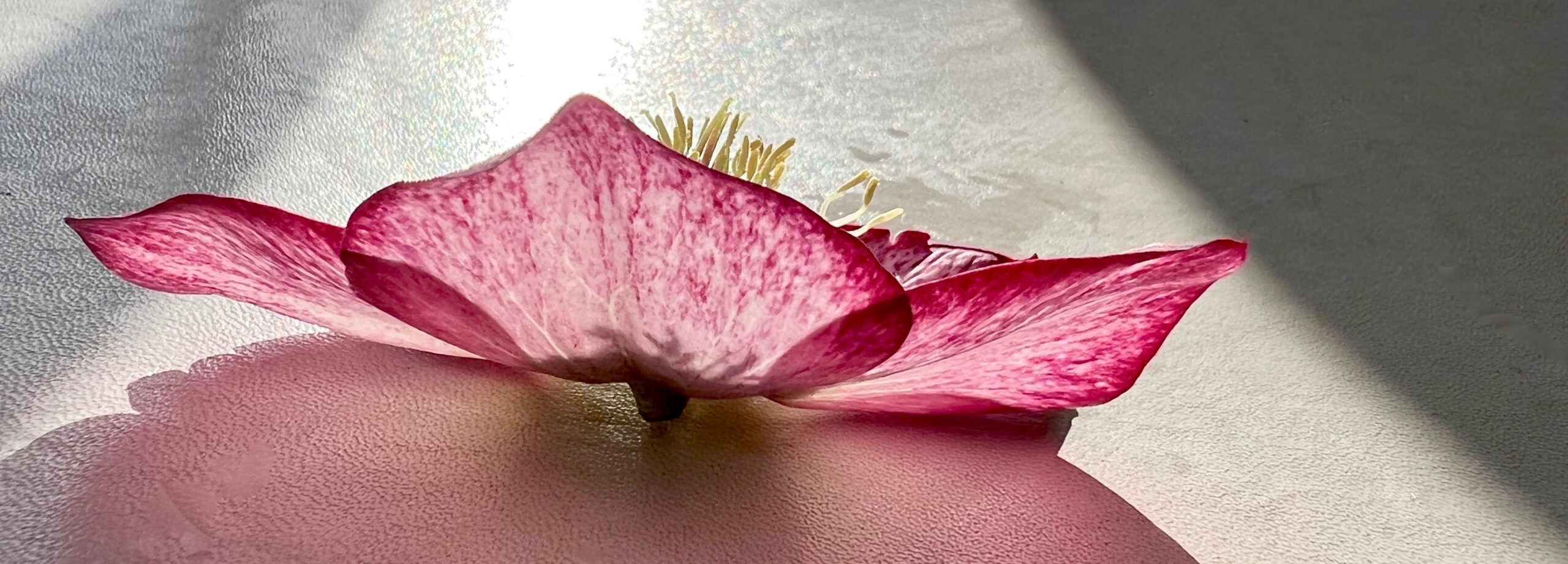
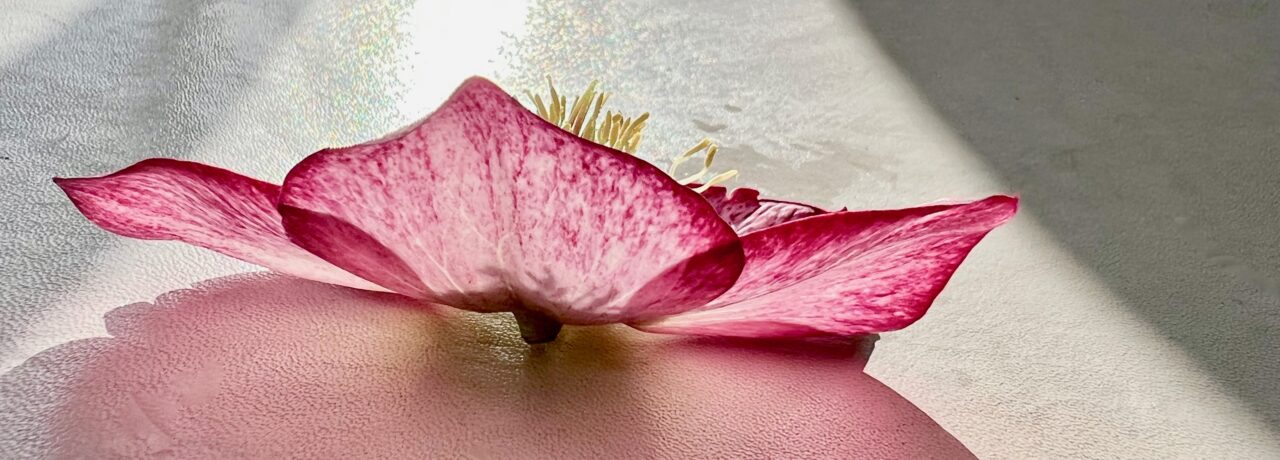
Helleborus Days / 17th – 18th 2024 / 10am – 5pm
Hellebores are tough, long-lived evergreen perennials that work wonderfully as a foundational planting under deciduous shrubs and trees. They are also happy out on their own in cooler or north-facing borders. The dark, glossy green foliage – which can be removed in late winter to show off the flowers if you have the time and inclination – are effective as a ground cover and an excellent companion for the blues of Pulmonaria, yellow winter aconites (Eranthis hyemalis), and purple of Cyclamen early in the year. White Pachyphragma macrophylla, Viola, Crocus, and early tulips can complete the picture, giving you great early interest.
Hellebores are native to the alkaline soils of mountainous regions of eastern Europe, northern Turkey and China, with species also occurring in Western Europe and the Mediterranean.
They come in a wide variety of flower forms and colours, some of which are highly prized among aficionados. They are popular with pollinators and will happily cross and produce seedlings, although these will often look different to the parents. They make fine cut flowers and last far better if they are cut after being pollinated. The flower heads also look wonderful floating in water bowls.
In the ground, the flowers are long-lasting, typically flowering between February and April, but even once the reproductive parts of the flower have fallen away, the structure can still remain for many weeks more, and equally attractive are their seed heads. The foliage is evergreen and makes an excellent groundcover. They like a good humus, neutral to alkaline soil with reliable well drained moisture. They are very effective under deciduous trees and shrubs but less successful under evergreen and shallow-rooted trees such as conifers.
Hellebores are best planted after they’ve flowered as they dislike root disturbance and should be divided only in autumn. They are best propagated from seed.
Flowering in winter is a risky business, but Hellebores are up to the task. You may see them flop dramatically in freezing weather as if all is lost, but this is a coping mechanism and plants bounce right back with the thaw.
There are few plants as dramatic as Hellebores and even less in February, and they certainly deserve their place in the winter garden. This is why we give them a little celebration here every year.
